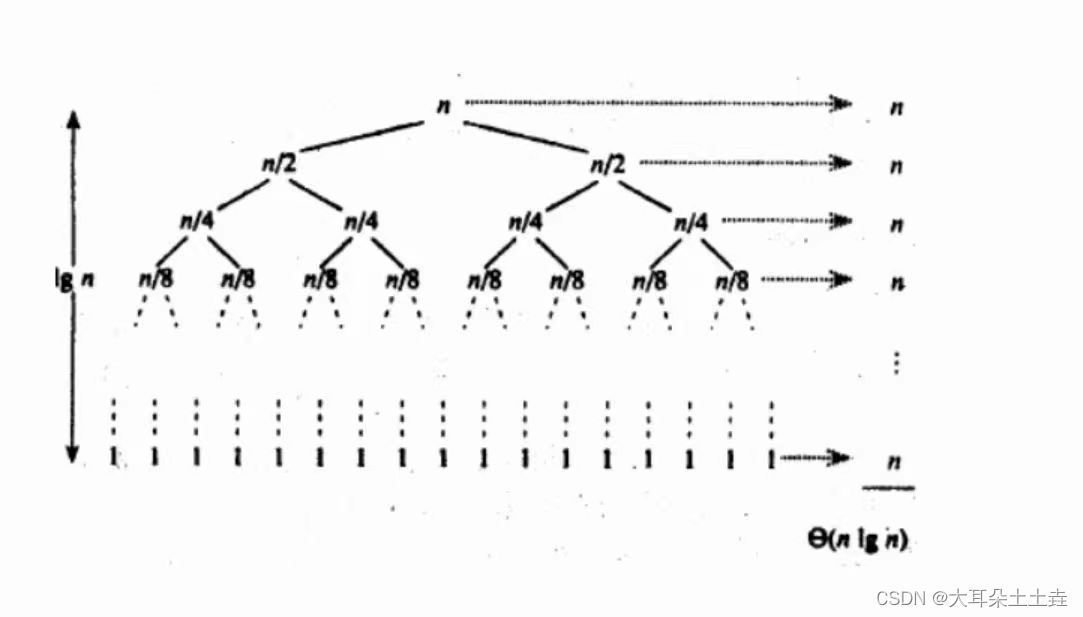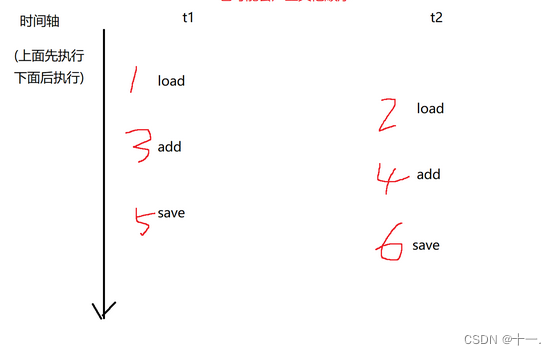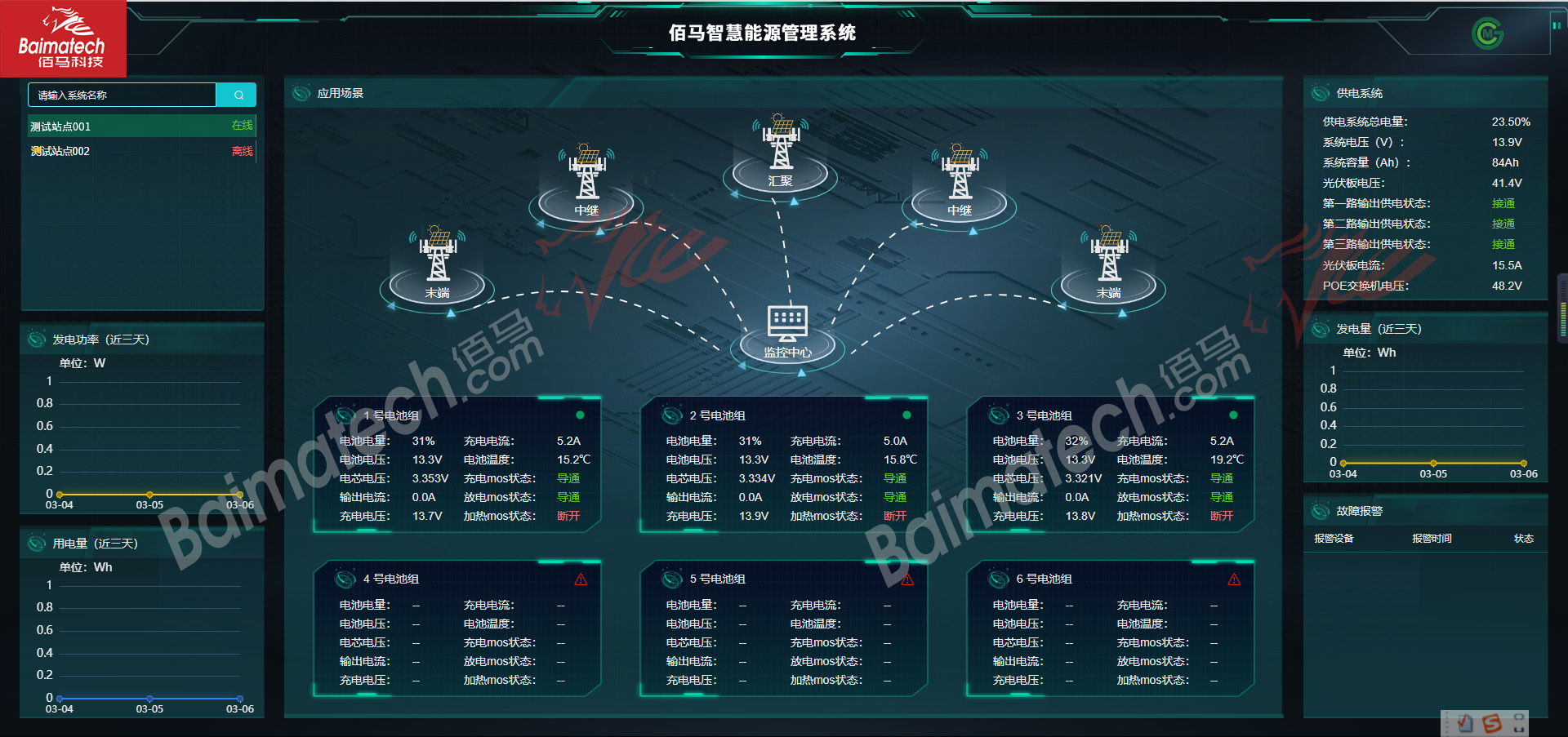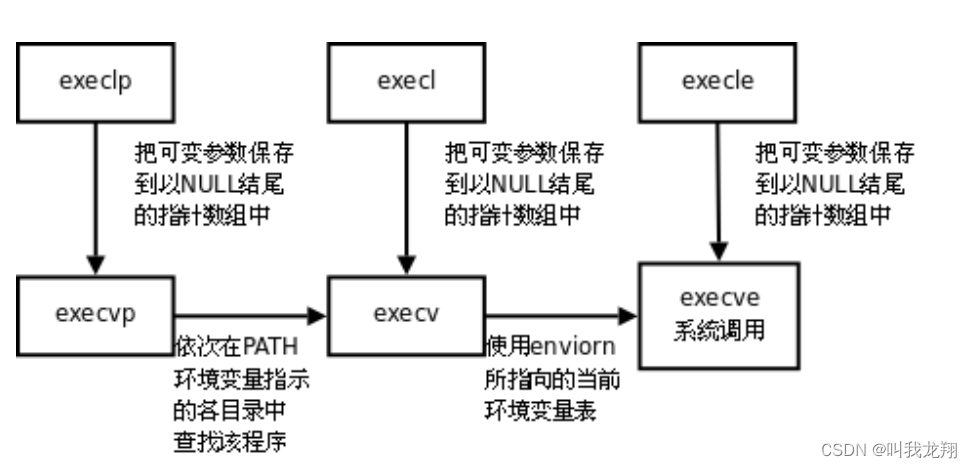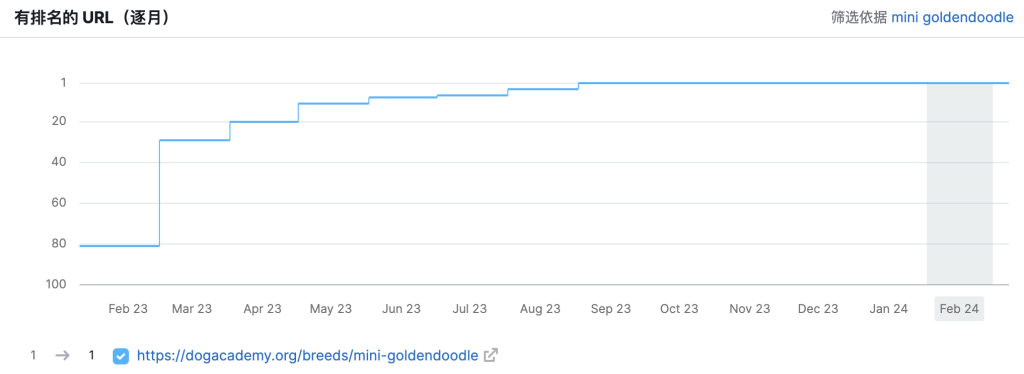目录
- 一、JDK 8之前的日期时间API
- 1.1、System类中获取时间戳的方法
- 1.2、Java中两个Date类的使用
- 1.3、SimpleDateFormat的使用
- 1.4、Calendar日历类的使用
- 二、JDK8中日期时间API的介绍
- 2.1、LocalDate、LocalTime、LocalDateTime的使用
- 2.2、Instant类的使用
- 2.3、DateTimeFormatter的使用
一、JDK 8之前的日期时间API
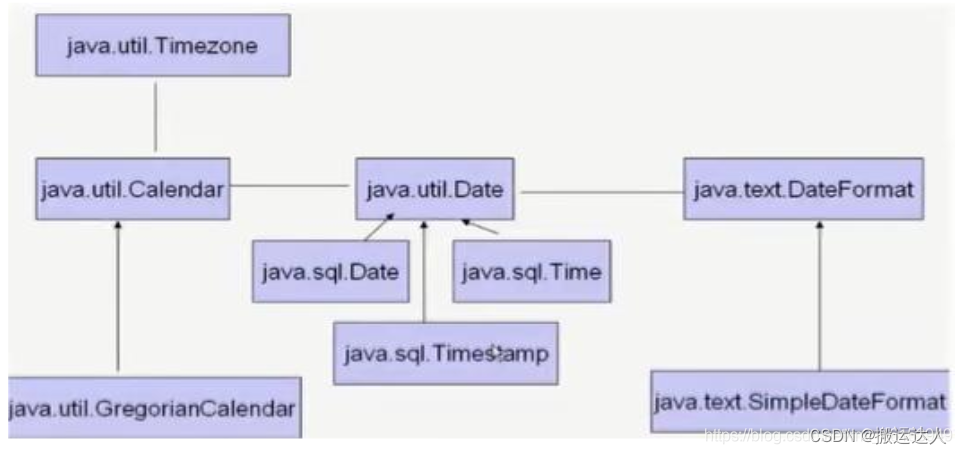
1.1、System类中获取时间戳的方法
System类提供的public static long currentTimeMillis()用来返回当前时间与1970年1月1日0时0分0秒之间以
毫秒为单位的时间差。
import org.junit.Test;/*** JDK 8之前日期和时间的API测试*/
public class DateTimeTest {//1.System类中的currentTimeMillis()@Testpublic void test1(){long time = System.currentTimeMillis();//返回当前时间与1970年1月1日0时0分0秒之间以毫秒为单位的时间差。//称为时间戳System.out.println(time);}
}1.2、Java中两个Date类的使用
java.util.Date类 —> 表示特定的瞬间,精确到毫秒
|—java.sql.Date类
- 两个构造器的使用
- 构造器一:Date():创建一个
对应当前时间的Date对象- 构造器二:创建指定毫秒数的Date对象
- 两个方法的使用
- toString():显示当前的年、月、日、时、分、秒
- getTime():获取当前Date对象对应的
毫秒数。(时间戳)- java.sql.Date对应着数据库中的日期类型的变量
- 如何实例化
- 如何将java.util.Date对象转换为java.sql.Date对象
import org.junit.Test;
import java.util.Date;/*** JDK 8之前日期和时间的API测试*/
public class DateTimeTest {@Testpublic void test2(){//构造器一:Date():创建一个对应当前时间的Date对象Date date1 = new Date();System.out.println(date1.toString()); //Sat May 09 20:09:11 CST 2020System.out.println(date1.getTime()); //1589026216998//构造器二:创建指定毫秒数的Date对象Date date2 = new Date(1589026216998L);System.out.println(date2.toString());//创建java.sql.Date对象java.sql.Date date3 = new java.sql.Date(35235325345L);System.out.println(date3); //1971-02-13//如何将java.util.Date对象转换为java.sql.Date对象//情况一:
// Date date4 = new java.sql.Date(2343243242323L);
// java.sql.Date date5 = (java.sql.Date) date4;//情况二:Date date6 = new Date();java.sql.Date date7 = new java.sql.Date(date6.getTime());}
}1.3、SimpleDateFormat的使用
- Date类的API不易于国际化,大部分被废弃了,java.text.SimpleDateFormat类是一个不与语言环境有关的方式来格式化和解析日期的具体类。
- 它允许进行
- 格式化:日期—>文本
- 解析:文本—>日期
SimpleDateFormat的使用:SimpleDateFormat对日期Date类的格式化和解析
- 两个操作
1.1格式化:日期—>字符串
1.2解析:格式化的逆过程,字符串—>日期- SimpleDateFormat的实例化
import org.junit.Test;
import java.text.ParseException;
import java.text.SimpleDateFormat;
import java.util.Date;public class DateTime {@Testpublic void testSimpleDateFormat() throws ParseException {//实例化SimpleDateFormatSimpleDateFormat sdf = new SimpleDateFormat();//格式化:日期---》字符串Date date = new Date();System.out.println(date); //Sun May 10 16:34:30 CST 2020String format = sdf.format(date);System.out.println(format); //20-5-10 下午4:34//解析:格式化的逆过程,字符串---》日期String str = "19-12-18 上午11:43";Date date1 = sdf.parse(str);System.out.println(date1); //Wed Dec 18 11:43:00 CST 2019//*************按照指定的方式格式化和解析:调用带参的构造器*****************
// SimpleDateFormat sdf1 = new SimpleDateFormat("yyyyy.MMMMM.dd GGG hh:mm aaa");SimpleDateFormat sdf1 = new SimpleDateFormat("yyyy-MM-dd hh:mm ss");//格式化String format1 = sdf1.format(date);System.out.println(format1); //02020.五月.10 公元 04:32 下午//解析:要求字符串必须是符合SimpleDateFormat识别的格式(通过构造器参数体现),//否则,抛异常Date date2 = sdf1.parse("02020.五月.10 公元 04:32 下午");System.out.println(date2); //Sun May 10 16:32:00 CST 2020}
}举例
import org.junit.Test;import java.text.ParseException;
import java.text.SimpleDateFormat;
import java.util.Date;/*** jdk 8 之前的日期时间的API测试* 1.System类中currentTimeMillis();* 2.java.util.Date和字类java.sql.Date* 3.SimpleDateFormat* 4.Calendar*/
public class DateTime {/*** 练习1:字符串"2020-09-08"转换为java.sql.Date**/@Testpublic void testExer() throws ParseException {String birth = "2020-09-08";SimpleDateFormat sdf1 = new SimpleDateFormat("yyyy-MM-dd");Date date = sdf1.parse(birth);
// System.out.println(date);java.sql.Date birthDate = new java.sql.Date(date.getTime());System.out.println(birthDate);}
}1.4、Calendar日历类的使用
Calendar是一个抽象基类,主用用于完成日期字段之间相互操作的功能。- 获取
Calendar实例的方法- 使用
Calendar.getInstance()方法 - 调用它的子类
GregorianCalendar的构造器。
- 使用
- 一个Calendar的实例是系统时间的抽象表示,通过
get(intfield)方法来取得想要的时间信息。比如YEAR、MONTH、DAY_OF_WEEK、HOUR_OF_DAY 、MINUTE、SECONDpublic void set(intfield,intvalue)public void add(intfield,intamount)public final Date getTime()public final void setTime(Date date)
- 注意:
- 获取月份时:一月是0,二月是1,以此类推,12月是11
- 获取星期时:周日是1,周二是2,。。。。周六是7
import java.util.Calendar;
import java.util.Date;import org.junit.Test;/*** jdk 8 之前的日期时间的API测试* 1.System类中currentTimeMillis();* 2.java.util.Date和字类java.sql.Date* 3.SimpleDateFormat* 4.Calendar*/
public class DateTime {/*** Calendar日历类的使用*/@Testpublic void testCalendar(){//1.实例化//方式一:创建其子类(GregorianCalendar)的对象//方式二:调用其静态方法getInstance()Calendar calendar = Calendar.getInstance();// System.out.println(calendar.getClass()); //class java.util.GregorianCalendar//2.常用方法//get()int days = calendar.get(Calendar.DAY_OF_MONTH);System.out.println(days); //10System.out.println(calendar.get(Calendar.DAY_OF_YEAR)); //131,今天是这一年的131天//set()//calendar可变性calendar.set(Calendar.DAY_OF_MONTH,22);days = calendar.get(Calendar.DAY_OF_MONTH);System.out.println(days); //22//add()calendar.add(Calendar.DAY_OF_MONTH,-3);days = calendar.get(Calendar.DAY_OF_MONTH);System.out.println(days); //22-3 --》19//getTime():日历类---> DateDate date = calendar.getTime();System.out.println(date); //Tue May 19 17:12:06 CST 2020//setTime():Date ---> 日历类Date date1 = new Date();calendar.setTime(date1);days = calendar.get(Calendar.DAY_OF_MONTH);System.out.println(days); //10}
}二、JDK8中日期时间API的介绍
2.1、LocalDate、LocalTime、LocalDateTime的使用
LocalDate、LocalTime、LocalDateTime类是其中较重要的几个类,它们的实例是不可变的对象,分别表示使用ISO-8601日历系统的日期、时间、日期和时间。它们提供了简单的本地日期或时间,并不包含当前的时间信息,也不包含与时区相关的信息。
-LocalDate代表IOS格式(yyyy-MM-dd)的日期,可以存储生日、纪念日等日期。LocalTime表示一个时间,而不是日期。LocalDateTime是用来表示日期和时间的,这是一个最常用的类之一。
- 注:ISO-8601日历系统是国际标准化组织制定的现代公民的日期和时间的表示法,也就是公历。
import org.junit.Test;import java.time.LocalDate;
import java.time.LocalDateTime;
import java.time.LocalTime;/*** jdk 8中日期时间API的测试*/
public class JDK8DateTimeTest {/*** LocalDate、LocalTime、LocalDateTime的使用**/@Testpublic void test1(){//now():获取当前的日期、时间、日期+时间LocalDate localDate = LocalDate.now();LocalTime localTime = LocalTime.now();LocalDateTime localDateTime = LocalDateTime.now();System.out.println(localDate);System.out.println(localTime);System.out.println(localDateTime);//of():设置指定的年、月、日、时、分、秒。没有偏移量LocalDateTime localDateTime1 = LocalDateTime.of(2020, 10, 6, 13, 23, 43);System.out.println(localDateTime1);//getXxx():获取相关的属性System.out.println(localDateTime.getDayOfMonth());System.out.println(localDateTime.getDayOfWeek());System.out.println(localDateTime.getMonth());System.out.println(localDateTime.getMonthValue());System.out.println(localDateTime.getMinute());//体现不可变性//withXxx():设置相关的属性LocalDate localDate1 = localDate.withDayOfMonth(22);System.out.println(localDate);System.out.println(localDate1);LocalDateTime localDateTime2 = localDateTime.withHour(4);System.out.println(localDateTime);System.out.println(localDateTime2);//不可变性LocalDateTime localDateTime3 = localDateTime.plusMonths(3);System.out.println(localDateTime);System.out.println(localDateTime3);LocalDateTime localDateTime4 = localDateTime.minusDays(6);System.out.println(localDateTime);System.out.println(localDateTime4);}
}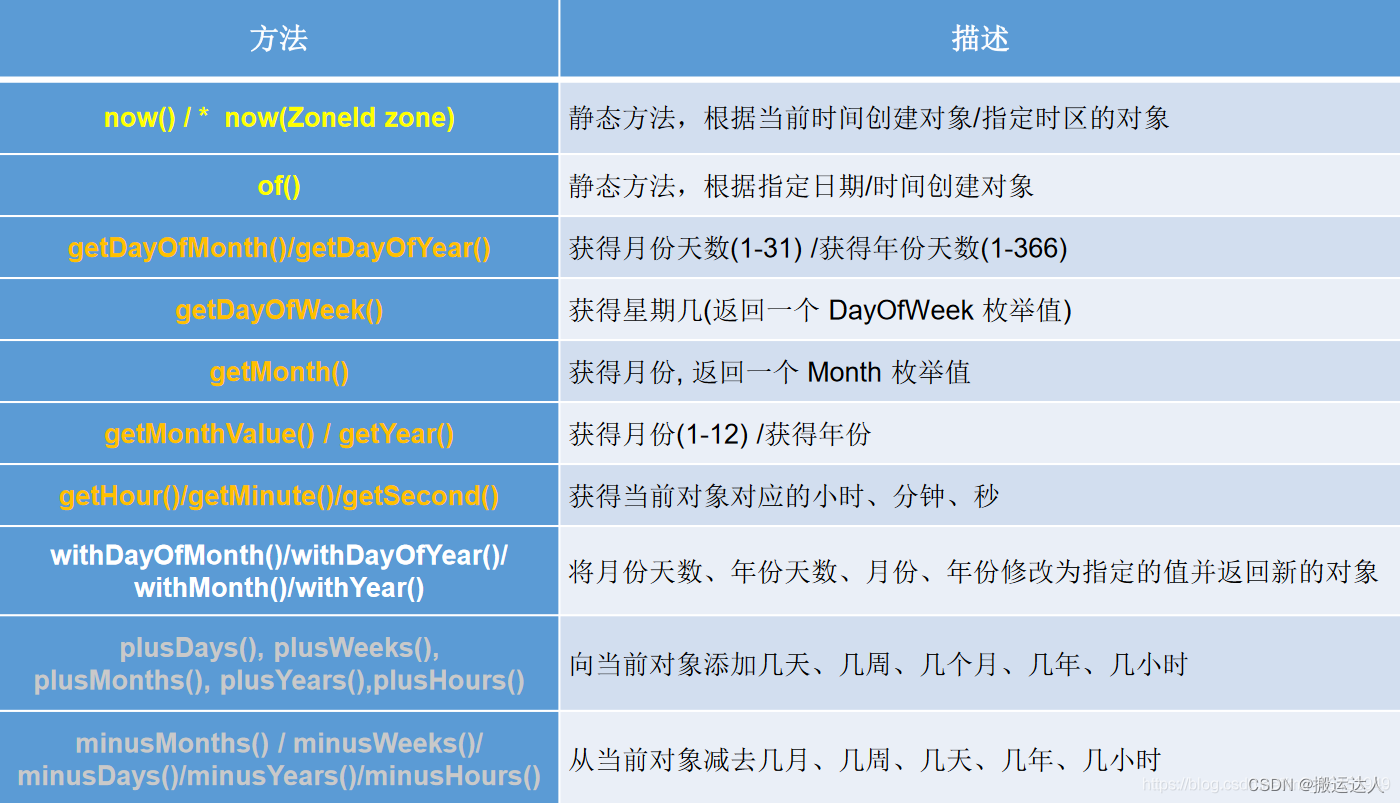
2.2、Instant类的使用
- Instant:时间线上的一个瞬时点。这可能被用来记录应用程序中的事件时间戳。
- 在处理时间和日期的时候,我们通常会想到年,月,日,时,分,秒。然而,这只是时间的一个模型,是面向人类的。第二种通用模型是面向机器的,或者说是连续的。在此模型中,时间线中的一个点表示为一个很大的数,这有利于计算机处理。在UNIX中,这个数从1970年开始,以秒为的单位;同样的,在Java中,也是从1970年开始,但以毫秒为单位。
- java.time包通过值类型Instant提供机器视图,不提供处理人类意义上的时间单位。Instant表示时间线上的一点,而不需要任何上下文信息,例如,时区。概念上讲,它只是简单的表示自1970年1月1日0时0分0秒(UTC)开始的秒数。因为java.time包是基于纳秒计算的,所以Instant的精度可以达到纳秒级。
(1 ns = 10-9s) 1秒= 1000毫秒=106微秒=109纳秒
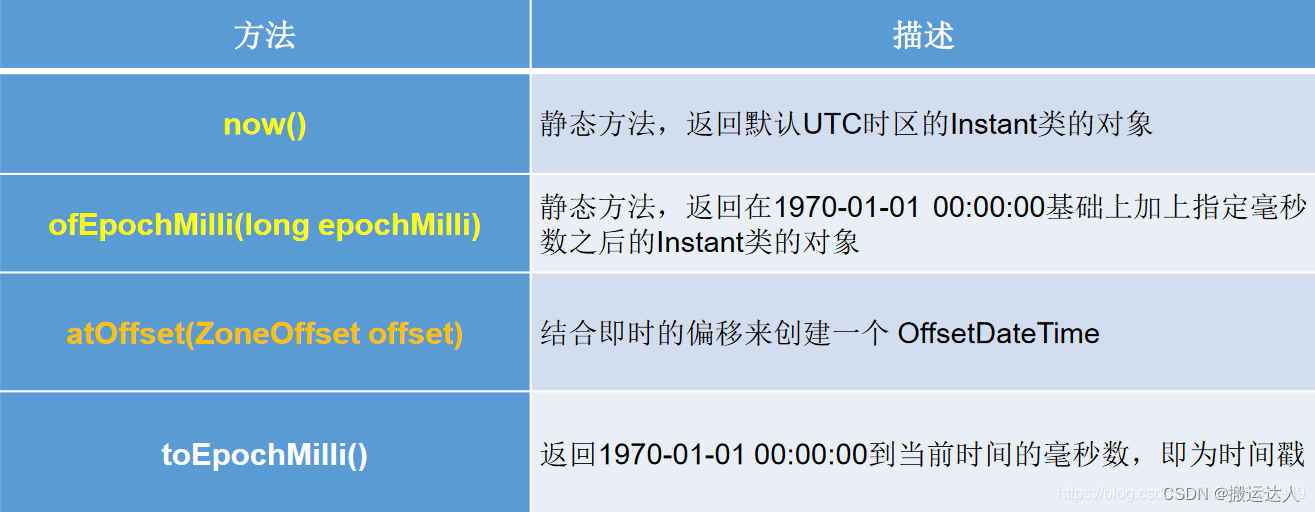
import org.junit.Test;import java.time.*;/*** jdk 8中日期时间API的测试*/
public class JDK8DateTimeTest {/*** Instant的使用*/@Testpublic void test2(){//now():获取本初子午线对应的标准时间Instant instant = Instant.now();System.out.println(instant); //2020-05-10T09:55:55.561Z//添加时间的偏移量OffsetDateTime offsetDateTime = instant.atOffset(ZoneOffset.ofHours(8));//东八区System.out.println(offsetDateTime); //2020-05-10T18:00:00.641+08:00//toEpochMilli():获取自1970年1月1日0时0分0秒(UTC)开始的毫秒数 ---> Date类的getTime()long milli = instant.toEpochMilli();System.out.println(milli); //1589104867591//ofEpochMilli():通过给定的毫秒数,获取Instant实例 -->Date(long millis)Instant instant1 = Instant.ofEpochMilli(1550475314878L);System.out.println(instant1); //2019-02-18T07:35:14.878Z}
}2.3、DateTimeFormatter的使用
java.time.format.DateTimeFormatter 类:该类提供了三种格式化方法:
- 预定义的标准格式。如:
ISO_LOCAL_DATE_TIME;ISO_LOCAL_DATE;ISO_LOCAL_TIME - 本地化相关的格式。如:
ofLocalizedDateTime(FormatStyle.LONG) - 自定义的格式。如:
ofPattern(“yyyy-MM-dd hh:mm:ss”)

import org.junit.Test;import java.time.*;
import java.time.format.DateTimeFormatter;
import java.time.format.FormatStyle;
import java.time.temporal.TemporalAccessor;/*** jdk 8中日期时间API的测试*/
public class JDK8DateTimeTest {/*** DateTimeFormatter:格式化或解析日期、时间* 类似于SimpleDateFormat*/@Testpublic void test3(){//方式一:预定义的标准格式。如:ISO_LOCAL_DATE_TIME;ISO_LOCAL_DATE;ISO_LOCAL_TIMEDateTimeFormatter formatter = DateTimeFormatter.ISO_LOCAL_DATE_TIME;//格式化:日期-->字符串LocalDateTime localDateTime = LocalDateTime.now();String str1 = formatter.format(localDateTime);System.out.println(localDateTime);System.out.println(str1);//2020-05-10T18:26:40.234//解析:字符串 -->日期TemporalAccessor parse = formatter.parse("2020-05-10T18:26:40.234");System.out.println(parse);//方式二://本地化相关的格式。如:ofLocalizedDateTime()//FormatStyle.LONG / FormatStyle.MEDIUM / FormatStyle.SHORT :适用于LocalDateTimeDateTimeFormatter formatter1 = DateTimeFormatter.ofLocalizedDateTime(FormatStyle.LONG);//格式化String str2 = formatter1.format(localDateTime);System.out.println(str2);//2020年5月10日 下午06时26分40秒//本地化相关的格式。如:ofLocalizedDate()//FormatStyle.FULL / FormatStyle.LONG / FormatStyle.MEDIUM / FormatStyle.SHORT : 适用于LocalDateDateTimeFormatter formatter2 = DateTimeFormatter.ofLocalizedDate(FormatStyle.MEDIUM);//格式化String str3 = formatter2.format(LocalDate.now());System.out.println(str3);//2020-5-10//重点: 方式三:自定义的格式。如:ofPattern(“yyyy-MM-dd hh:mm:ss”)DateTimeFormatter formatter3 = DateTimeFormatter.ofPattern("yyyy-MM-dd hh:mm:ss");//格式化String str4 = formatter3.format(LocalDateTime.now());System.out.println(str4);//2020-05-10 06:26:40//解析TemporalAccessor accessor = formatter3.parse("2020-05-10 06:26:40");System.out.println(accessor);}
}